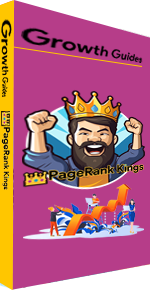Navigating the Digital Evolution with PageRank Kings
In today's digital-first business landscape, a mere online presence is insufficient. What brands need is a sophisticated digital strategy that's rooted in a deep understanding of industry nuances, targeted audience segments, and the latest in operational efficiencies. Enter PageRank Kings, the champions of such tailored transformations.
Industry-Tailored Digital Solutions
Every industry possesses its unique challenges and opportunities. Recognizing this, PageRank Kings crafts bespoke websites and applications that resonate with the specific needs and aspirations of businesses. Furthermore, we seamlessly integrate these platforms with powerful tools like HubSpot to ensure your digital infrastructure stands out and stays ahead.
The Power of Integrated Sales Enablement
But, a robust digital infrastructure is only as good as its ability to drive results. This is why we intertwine our technical prowess with sales enablement strategies. Through operations automation tools and training, we empower businesses to make the most of every lead, every click, and every customer interaction.
Persona-based SEO & Holistic Marketing
The modern customer's journey is intricate. To effectively navigate this journey, PageRank Kings merges persona-based SEO with Inbound and Account-Based Marketing strategies. By doing so, we ensure that businesses not only reach their audiences but engage with them in meaningful, value-driven ways.
The I.D.E.A.L. Framework and Scrum are both methodologies used to approach and manage projects, but they cater to different needs, have different focuses, and are applied in different scenarios. Here's a comparison of the two:
The Foundations: Scrum & I.D.E.A.L.
What truly sets PageRank Kings apart is our foundational philosophy. We incorporate principles from both the Scrum and I.D.E.A.L. frameworks. While Scrum fuels our product development, emphasizing collaboration and adaptability, the I.D.E.A.L. framework guides our continuous improvement initiatives. Together, they ensure that we're not just implementing strategies but constantly refining them to offer unparalleled value.
The I.D.E.A.L. Framework and Scrum are both methodologies used to approach and manage projects, but they cater to different needs, have different focuses, and are applied in different scenarios. Here's a comparison of the two:
I.D.E.A.L. Framework:
The I.D.E.A.L. framework is generally used for process improvement. The acronym stands for:
- Initiate – Begin the process and define the scope of improvement.
- Diagnose – Analyze the current situation, problems, and opportunities.
- Establish – Set goals for the improvement effort.
- Act – Implement improvements.
- Learn – Reflect on the results, measure effectiveness, and integrate feedback for future iterations.
Application: This framework is often used for continuous improvement initiatives, particularly in the realm of software process improvement.
Focus: I.D.E.A.L is all about process improvement — identifying gaps in current processes, and implementing and refining strategies to enhance productivity, quality, or other key metrics.
Scrum:
Scrum is a specific agile methodology primarily used for software development projects.
- Roles: There are three primary roles in Scrum: Product Owner, Scrum Master, and Development Team.
- Artifacts: The Product Backlog, Sprint Backlog, and Product Increment.
- Ceremonies: Key events in Scrum include the Sprint Planning, Daily Scrum, Sprint Review, and Sprint Retrospective.
- Iterations: Scrum operates in "sprints", which are time-boxed iterations (usually 2-4 weeks) in which a set amount of work is completed.
Application: Scrum is commonly applied to complex product development efforts where requirements might change over time and adaptability is crucial.
Focus: Scrum emphasizes collaboration, adaptability, and delivering tangible product increments in short, time-boxed cycles.
Differences:
- Purpose: I.D.E.A.L is for process improvement, while Scrum is an agile product development methodology.
- Duration: Scrum has defined time boxes (sprints) whereas the I.D.E.A.L. process doesn't prescribe specific durations for each phase.
- Structure: Scrum has well-defined roles, ceremonies, and artifacts, while the I.D.E.A.L. framework provides a more general process without such specific structure.
- Feedback Loop: While both methodologies value feedback, Scrum has built-in, regular intervals for feedback (after every sprint), while I.D.E.A.L. ends with a "Learn" phase to integrate feedback.
Similarities:
- Iterative: Both approaches promote iterative processes, valuing learning and improvement over time.
- Focus on Value: Both methodologies aim to deliver value, be it in terms of improved processes or tangible product increments.
- Feedback: Both recognize the importance of feedback for continuous improvement.
In summary, while both the I.D.E.A.L. framework and Scrum are valuable in specific scenarios, they cater to different needs. I.D.E.A.L. is tailored more towards understanding and improving processes, while Scrum is geared towards the adaptive development of products in a collaborative environment.
Embracing the Flywheel Methodology
Our mission transcends beyond delivering solutions. At PageRank Kings, our goal is to fuel business growth in every way possible. Leveraging the Flywheel Methodology, we emphasize the importance of delighting customers. This methodology helps businesses understand that satisfied customers are their best promoters, keeping the momentum of growth alive and spinning.



Comments